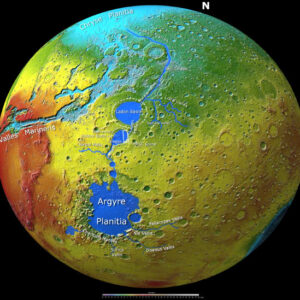In an astonishing breakthrough, scientists and researchers have finally pinpointed the location of Malaysia Airlines Flight 370 (MH370), which disappeared on March 8, 2014, under mysterious circumstances. This long-awaited discovery is being hailed as a monumental step toward solving one of aviation history’s greatest mysteries, providing hope for the families of the 239 passengers and crew members who were on board.

A Decade of Mystery
The disappearance of MH370 has puzzled experts, families, and aviation enthusiasts for nearly a decade. The flight took off from Kuala Lumpur International Airport, bound for Beijing, but lost contact with air traffic control shortly after takeoff. Despite extensive search efforts covering millions of square kilometers in the southern Indian Ocean, the main wreckage remained elusive, leading to a series of theories and speculations about its fate.
In the years following the incident, only a few pieces of debris, confirmed to be from MH370, were found on remote shores, including parts on the coasts of Africa and various islands in the Indian Ocean. The lack of substantial evidence has left many questions unanswered, and families have endured prolonged uncertainty and grief.
Breakthrough Discovery
Utilizing cutting-edge technology and sophisticated underwater mapping techniques, a team of researchers recently conducted an extensive analysis of satellite data and oceanic patterns, leading them to a previously unexplored area of the southern Indian Ocean. After weeks of searching, they announced that they have identified the likely wreckage site of MH370.
Initial sonar scans of the seabed have revealed what appears to be large debris consistent with aircraft wreckage, along with the identification of objects that may belong to the missing plane. The team is now working on conducting further investigations and retrieval efforts to confirm the findings.

The Role of Technology
This recent advancement in locating MH370 underscores the power of technology in modern archaeology and aviation research. Advanced sonar imaging, deep-sea exploration drones, and artificial intelligence algorithms have played pivotal roles in the search. These technologies allowed researchers to analyze the ocean floor with unprecedented detail, enabling them to sift through vast expanses of water and identify potential debris fields.
Additionally, satellite communication data from Inmarsat, which tracked the plane’s last known movements, has been instrumental in narrowing down the search area. Researchers have refined their understanding of the flight’s trajectory, leading to more focused efforts in locating the wreckage.
What’s Next?
The discovery of MH370’s potential location is only the beginning of what could be a complex recovery process. The next steps will involve deploying underwater remotely operated vehicles (ROVs) to investigate the identified wreckage site thoroughly. If confirmed, the team will then aim to recover key pieces of the aircraft, including the flight recorders, known as black boxes, which could provide vital information about the events leading up to the plane’s disappearance.

For the families of those on board, this discovery brings renewed hope. Many have long awaited answers about what happened to their loved ones and are desperate for closure. As the investigation unfolds, the search teams are committed to keeping families informed and engaged in the process.
Conclusion: A New Chapter in the MH370 Saga
The identification of the potential wreckage site of Malaysia Airlines Flight 370 marks a significant milestone in one of the most enduring aviation mysteries. As researchers and scientists continue their work, the aviation community watches with bated breath, hopeful that this discovery will finally provide clarity and answers to the questions that have lingered for nearly a decade.
While the road to recovery and investigation is still ahead, this breakthrough offers a glimmer of hope for resolution, not just for the families affected but also for the broader aviation industry, which seeks to learn from past tragedies to enhance flight safety and reliability. The search for MH370 may be entering a new chapter, one that could ultimately lead to answers long sought by many.






